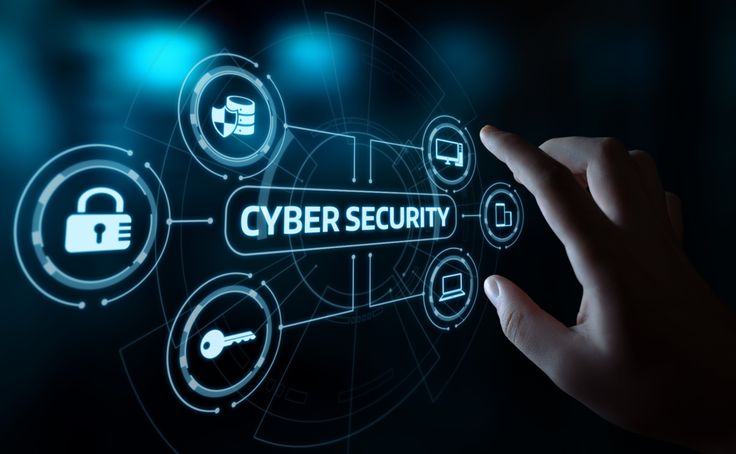The New Face of Cybersecurity
Cybersecurity in 2025: Think about how much has changed in the last five years like remote work, cloud apps, and AI tools are everywhere. With all this innovation, one thing has also grown just as fast: cyber threats.
In 2025, cybersecurity isn’t just a technical problem for the IT team; it’s a business survival issue. Hackers are smarter, tools are sharper, and the stakes are higher. The question is no longer “Will my business be attacked?” but “When, and how ready am I?”
The good news? With the right strategies, businesses can stay one step ahead.
What Cybersecurity Looks Like in 2025
The digital world has opened countless opportunities, but it has also widened the attack surface. Here’s what we’re seeing now:
- Hackers using AI to craft scams that look shockingly real.
- Ransomware-as-a-service making it easy for anyone to launch attacks.
- Cloud risks as more businesses migrate online.
- Stricter privacy laws demanding compliance from businesses of all sizes.
In short, cybersecurity has become less about reacting and more about staying prepared at all times.
The Biggest Threats Facing Businesses
1. AI-Powered Phishing
Remember those obvious scam emails with spelling mistakes? Those are gone. In 2025, hackers use AI to write perfect, personalized emails that look like they’re from your boss or bank. Businesses now need smarter email filters and trained employees to catch them. IBM Security reports that phishing remains the most common cyberattack, now supercharged by AI.
2. Ransomware on Steroids
Hackers aren’t just locking your data anymore, they’re threatening to leak it if you don’t pay. That makes having strong backup systems and a solid response plan essential.
3. Cloud Vulnerabilities
The cloud is convenient, but misconfigured systems can leave doors wide open for attackers. Zero-trust security, where no one is trusted by default is becoming the gold standard.
4. Insider Threats
Sometimes the threat isn’t outside. Employees can unintentionally (or intentionally) expose sensitive data. Tools that spot unusual behavior are becoming must-haves.
5. IoT Device Exploits
Smart devices from printers to factory sensors are easy entry points if left unsecured. Businesses must ensure every device connected to their network is patched and protected.
How Businesses Can Stay Protected
The good news? Cybersecurity tools are evolving just as fast as the threats. Here are the top ways to stay secure in 2025:
- Adopt Zero-Trust Security → Don’t assume anyone is safe until they’re verified every time. i.e:
- Fight AI with AI → Use AI-powered tools that detect and stop threats in real time.
- Train Employees Constantly → Technology can’t save you if your team clicks on a malicious link.
- Encrypt Everything → From customer data to internal chats, encryption keeps information safe even if it’s stolen.
- Build a Response Plan → Know what to do before an attack happens. Speed is everything.
What’s Next for Cybersecurity?
Looking ahead, we’re going to see some major shifts in how businesses defend themselves:
- Quantum-proof encryption to prepare for future supercomputers.
- Biometrics like fingerprints and facial recognition instead of passwords.
- Cybersecurity mesh a more flexible approach to protect remote and hybrid networks.
- Automated security responses where AI shuts down threats without waiting for humans.
- Privacy-first tools to keep up with global data regulations.
Real-World Example
Last year, a financial firm was targeted with AI-generated phishing emails. They looked so real that even executives almost clicked. But because the company had invested in AI-driven filters and trained staff, the attack was spotted and stopped.
It’s proof that the right mix of smart tools and aware employees is the best defense.
Conclusion
Cybersecurity in 2025 isn’t just about firewalls or antivirus anymore. It’s about being resilient. Businesses face smarter, faster threats, but with tools like AI-driven defense, zero-trust models, and well-trained teams, staying secure is possible.
At the end of the day, cybersecurity is no longer optional, it’s a business essential. Companies that invest in it now aren’t just protecting data; they’re protecting their reputation, customers, and future growth.
You can read our blog: Hybrid Cloud and AI: How to Scale Supply Chains in 2025
What’s the #1 cybersecurity risk in 2025?
AI-driven phishing and ransomware are leading the list.
How can small businesses protect themselves?
Start with basics: strong passwords, two-factor authentication, cloud security, and staff training.
Is cybersecurity too expensive?
Prevention costs far less than recovering from a major data breach.

